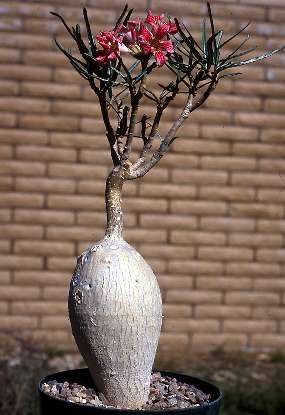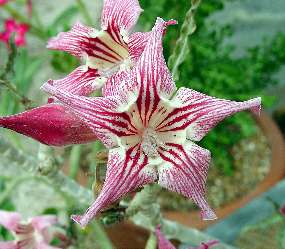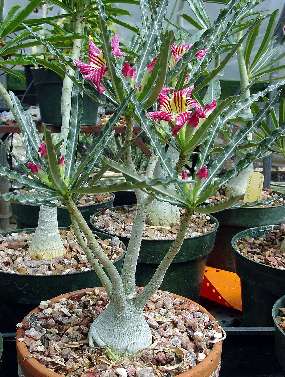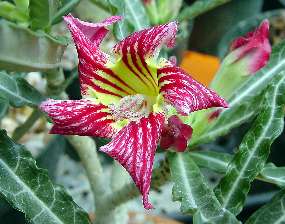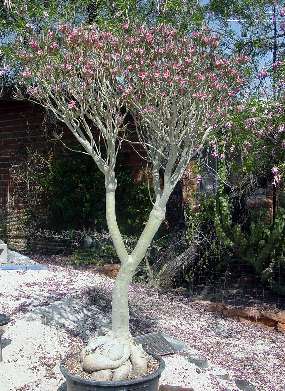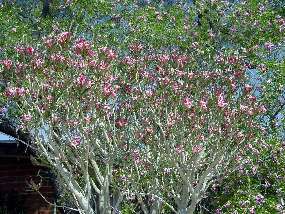![[Picture]](a.gif)
Adenium crispum Chiov.
Adenium crispum occurs in a band of sandy soil near the coast ot southern Somalia. In nature the fusiform caudex is subterranean. Most of the root system arises from near the top of this caudex. In cultivation the caudex is raised above soil level; fortunately the caudex is capable of rerooting from the bottom. The stems are thin and rarely exceed a foot tall. The small flowers are very distinctive and serve as the best identifier: most clones have quilled petals that are whitish with strong red lines extending from the throat to the margins. Some have flat petals, while some have solid red petals. This species is as sensitive to cold as A. somalense. They are also intolerant of hot, humid conditions. For these reasons it is not widely cultivated despite the beautfiul flowers and compact size.
(click on thumbnail for full size picture)

